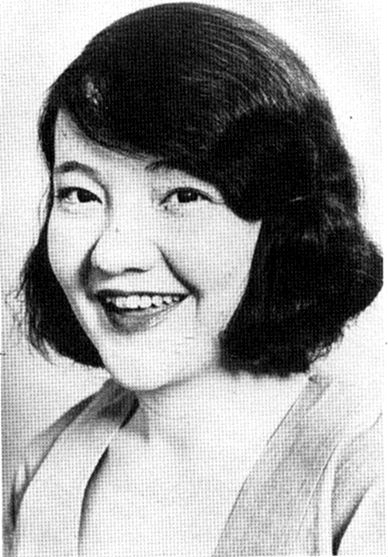Dorothy Mackaye (Dorothy Mackaye)

Actress, Playwright. Her name is scarcely remembered today; she wasn’t even a star in her own time. But she was once known as an infamous femme fatale, the focal point of a deadly love triangle that rocked the movie community in the waning days of the silent era. A native of Denver, Colorado (although she claimed she was born in Scotland), Mackaye began performing in vaudeville and made her Broadway debut in “The Very Idea” (1917). She had good supporting roles in several musical comedies, notably the long-running hit “Rose-Marie” (1924). In 1921 she married Ray Raymond, a popular song-and-dance man, and they went to Hollywood in 1926 hoping to break into the movies. A typical Jazz Age couple, they threw wild parties at their secluded Beachwood Canyon home and had many friends. One of them was Paul Kelly. A former child star at Vitagraph, Kelly was making a successful transition as an adult actor. He had known the Raymonds in New York and was delighted to see them again – especially Mrs. Raymond. At first glance, the pudgy, freckled Mackaye hardly fit the image of an alluring vamp, but she was self-assured and intelligent, and in social situations she brimmed with exuberance and sensuality. With her husband often away on vaudeville engagements, Mackaye and Kelly became lovers. All Tinseltown gossiped about the affair and word eventually got to Raymond. On April 26, 1927, while Mackaye was out shopping, Raymond got drunk, phoned his erstwhile friend and demanded a confrontation. Kelly, who had also been drinking, obliged, and while the maid looked on he savagely beat the entertainer’s head against a wall. Then he left. Mackaye returned shortly afterwards. According to her account Raymond joked about the fight and allowed himself to be put to bed. He never woke up, and in two days was dead. Realizing that her and Kelly’s careers, not to mention Kelly’s freedom, were in jeopardy, Mackaye contacted a doctor acquaintance, Walter Sullivan. She paid him $500 to sign a death certificate stating that her husband had died of natural causes, and a funeral and cremation were quickly arranged. But the coroner, acting on an anonymous tip, halted the proceedings. An autopsy revealed Raymond’s head injuries and the maid confessed to police that she had witnessed the fatal brawl. Kelly was arrested and charged with manslaughter; Mackaye and Dr. Sullivan were indicted for obstruction of justice. The trial of “Killer Kelly” was front page news. The actor denied having an affair; the prosecution produced love letters asserting otherwise. Mackaye was the star witness for the defense, but her cool, arrogant behavior on the stand – she claimed that show biz people were entitled to be “less conventional and more sophisticated” in their relationships – undermined their efforts. Kelly was convicted and sentenced to ten years at San Quentin. While he was in a Los Angeles County facility awaiting transfer to the penitentiary, Mackaye was out on bail pending her own trial. Dr. Sullivan had struck a deal to testify against her, and her attorneys advised that any attempt to contact Kelly would hurt her case. But when she learned that he would be given one day out of jail to settle his business affairs, she went to see him. She later said, “I had to do it. I couldn’t let him be sent up like that without trying to make him see that whatever has been done is done, but there is still a future for us…I wanted to give him hope and let him know that if I get out before he does, I’ll be waiting for him”. The papers had a field day over this “clandestine tryst” and Mackaye lost whatever credibility she had with the jury, who reached a guilty verdict in two hours. She got three years in the women’s block at San Quentin. The felonious lovers, locked up just a cell block apart from each other, were model prisoners. Mackaye served half her sentence before being paroled for good behavior. Kelly served 25 months. When he was paroled in late 1929, Mackaye, true to her word, was waiting for him. They married in 1931 and set about rebuilding their lives. During her imprisonment Mackaye gained the confidence of other inmates, who told her of their experiences. She wrote a play based on these stories, “Women in Prison” (1932), which was staged in Los Angeles with herself in the lead. Warner Bros. produced it as “Ladies They Talk About” (1933), starring Barbara Stanwyck. At turns campy and sympathetic, it was the precursor of later “women behind bars” flicks. It was filmed again in 1942 as “Lady Gangster”. The author did not live to see the remake. On January 2, 1940, Mackaye was driving to her Northridge home when her car skidded and overturned into a ditch; she died of her injuries three days later. In her last years Mackaye avoided the spotlight as assiduously as she had once sought it. Her death certificate listed her occupation as “housewife”. There were no funeral services, no obituaries, and her ashes were buried in an unmarked grave in an unrecorded location at Oakwood Memorial Park. Kelly was rather quick to put this chapter of his life behind him, remarrying the following year. He became a star on Broadway and a successful character actor in films. Kelly died in 1956 and was interred at Holy Cross Cemetery in Culver City. Ray Raymond and his story are buried at Forest Lawn in Glendale. And somewhere beneath the rugged hills of Chatsworth lies a woman who sparked one of Hollywood’s most notorious scandals. (bio by: Bobb Edwards) Family links: Spouses: Ray Raymond (1887 – 1927)* Paul Kelly (1899 – 1956)* *Calculated relationshipCause of death: automobile accident
Born
- May, 08, 1899
- USA
Died
- January, 01, 1940
- USA
Cause of Death
- automobile accident
Cemetery
- Oakwood Memorial Park
- California
- USA

